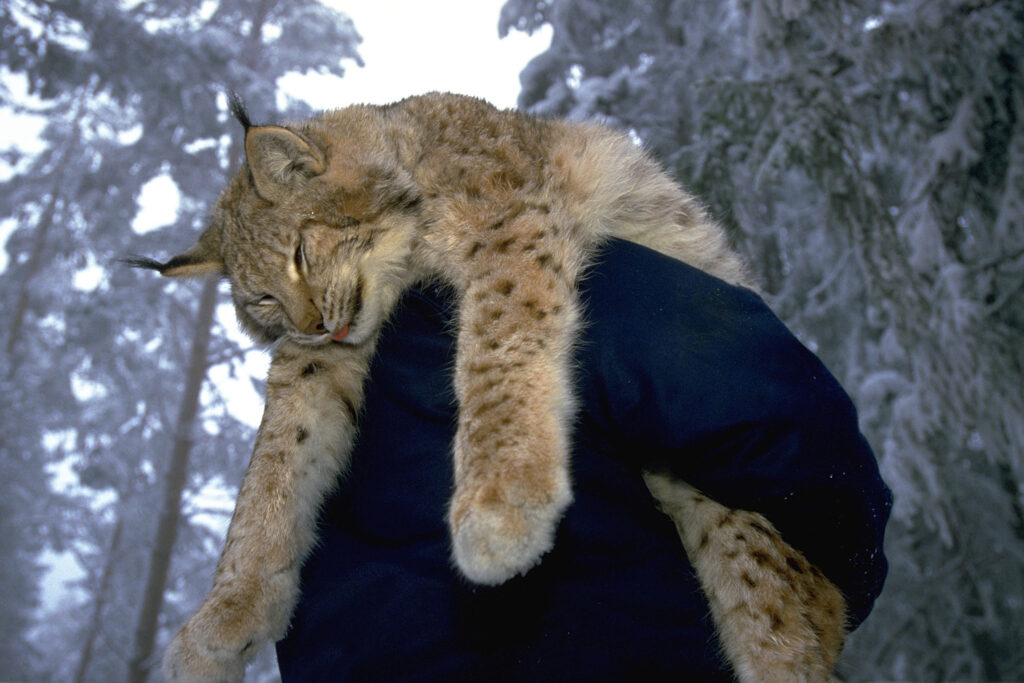The annual license hunting of endangered lynxes in Sweden started on 1 March and will last the whole month amid a new complaint about inaccurate figures concerning the minimum number of lynxes Sweden is required by EU law to preserve.
This year, 87 lynxes will be shot. As previously reported, last year 139 animals and the year before a record number of 188 lynxes were killed. Today, the lynx population is estimated to 1276. The Swedish Environmental Protection Agency (Naturvårdsverket) has estimated that a minimum number of 870 lynxes is necessary to preserve the population but the figure is uncertain.
How uncertain was known already in 2013 to the Swedish government when it decided that the minimum number (‘favorable reference number’) was 870 lynxes. This figure was based on an incorrect reporting in the Swedish Species Information Centre (Artdatabanken) that the lynx population was 700 in 1995, the year when Sweden joined the EU.
According to the EU Habitats Directive, a Member State may not have fewer numbers of individuals of a protected species than it had when it joined the EU. Available statistics from the Swedish University of Agricultural Sciences (SLU) shows that there were around 2000 lynx in 1997-1998. Independent statistics from 1995 are lacking.
The number of 700 lynxes was never reported neither by SLU nor Artdatabanken and entered the database by mistake. As soon as it was discovered by Artdabanken, it corrected the number to 1700 but the government at the time ignored the correction and stuck to the inaccurate number despite warnings from officials at the Species Information Centre that the EU would not accept it.
The Swedish minister of environment defended the figure because it had been recorded and added a few hundred more lynxes to “have a good margin”. Because of the decision, hundreds of lynxes have been killed illegally since then.
"The arbitrary handling of the reference value of endangered species by politicians is not acceptable at a time when the loss of biodiversity is considered the third greatest threat to human societies,” Misha Istratov, chairman of the Species Crisis Foundation in Sweden (Artkrisen), told The Brussels Times.
His foundation has filed a formal complaint to the European Commission as a first step to launching an infringement procedure against Sweden. "Sweden will report new reference values to the EU this summer, which normally happens every six years,” he said. “Sweden had better report correct reference values and avoid being investigated by the Commission.”
Another complaint against the annual lynx hunt in Sweden was filed already in March 2024 by the Swedish Carnivore Association but the Commission has not yet opened any infringement procedure.
“The lynx hunt denies Swedes and the citizens of other EU Member States their legal right to expect wildlife diversity and functioning ecosystems, which the EU Habitats Directive was designed to safeguard,” commented Magnus Orrebrant, Chairman of the Carnivore Association, ahead of the hunt this year.
“The lynx is an iconic part of Europe’s natural heritage, since before the Ice age”, he explained. “An important predator, with its Swedish population now in decline, because of too heavy hunting pressure. Sweden is violating EU legislation, and this should be a concern for every EU member. Why should other countries stick to EU law, if the Swedish government is allowed to do as it pleases?”
“Why hunt lynx at all?” he asks. “This hunt exists only to satisfy hunters. A massive majority of Swedes want the magnificent lynx to roam free in our nature. Lynxes are also beneficial to us humans, since they keep especially the roe deer populations in check and in better health, at the same time as they lower the risk for traffic accidents by keeping down the deer population.”
M. Apelblat
The Brussels Times

